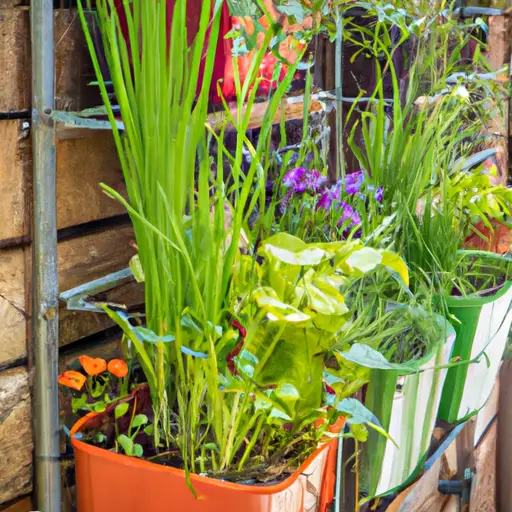Unlocking the Potential of Vertical Container Gardening
Introduction:
As urbanization continues to rise, the available space for traditional gardening is diminishing. However, gardening enthusiasts and space-constrained individuals need not despair. Vertical container gardening offers a practical and efficient solution for maximizing green spaces in limited areas. This innovative approach utilizes vertical structures, such as walls, trellises, or hanging pots, to create beautiful and functional gardens. In this article, we will discuss the benefits, techniques, and potential of vertical container gardening.
Benefits of Vertical Container Gardening:
1. Maximizing Space Utilization: Vertical gardens allow individuals to cultivate plants in areas where horizontal planting is impossible or restricted due to limited land availability. By utilizing vertical structures effectively, gardeners can create lush gardens even in small balconies or patios.
2. Aesthetic Appeal: From vibrant flowers cascading down trellises to lush green foliage covering walls, vertical container gardens are visually stunning additions to any space. They add depth and texture to otherwise plain surfaces while creating an inviting atmosphere.
3. Improved Air Quality: Plants are known for their air-purifying abilities as they naturally filter pollutants from the environment. Vertical gardens contribute significantly to improving air quality by absorbing carbon dioxide and releasing fresh oxygen into the surroundings.
4. Enhanced Insulation: The dense foliage formed by vertical gardening acts as a natural insulator against heat and sound waves. This insulation reduces energy costs by keeping buildings cooler during summer months and reducing noise pollution from outside sources.
5. Accessibility and Maintenance: The height of vertical gardens ensures that plants are easily reachable for maintenance tasks such as watering, pruning, and harvesting. This accessibility eliminates common challenges faced in traditional ground-level gardens.
Techniques for Vertical Container Gardening:
1. Choosing Suitable Plants: Not all plants are suitable for vertical container gardening due to their growth habits or weight-bearing requirements. Opt for lightweight plants with shallow root systems that can thrive in vertical spaces. Examples include herbs, salad greens, strawberries, and certain flowering vines.
2. Selecting Appropriate Containers: The choice of containers plays a crucial role in vertical gardening. Ensure that the containers are sturdy and can withstand the weight of the plants and soil when vertically positioned. Hanging pots, wall-mounted planters, and modular vertical systems are popular choices.
3. Implementing Irrigation Systems: Vertical gardens require efficient irrigation systems to prevent over or under-watering. Drip irrigation or self-watering planters ensure that plants receive adequate moisture without the risk of waterlogging or drying out.
4. Providing Structural Support: Before starting a vertical garden, consider the structural integrity of the chosen surface. Strong walls or fences are ideal for heavier plants, while lightweight trellises or wire mesh supports work well for smaller climbers.
5. Maximizing Sunlight Exposure: Most plants require ample sunlight for optimal growth. Assess the selected area’s exposure to sunlight and choose plants accordingly. If the space is shaded, focus on shade-loving plants or consider installing supplemental grow lights.
Unlocking the Potential:
1. Food Production: Vertical container gardening has immense potential in urban agriculture by enabling individuals to grow their own fresh produce even in limited spaces. This self-sufficiency promotes healthier eating habits and reduces reliance on store-bought produce.
2. Biodiversity Conservation: Vertical gardens provide habitats for insects, birds, and other small animals in urban environments, fostering biodiversity even in concrete jungles.
3. Therapeutic Benefits: Gardening has proven therapeutic benefits such as reducing stress levels and improving mental well-being. Vertical container gardening allows individuals to experience these benefits regardless of space constraints.
4. Community Engagement: Vertical container gardening can have a positive impact on communities by promoting social interactions among neighbors who share a common interest in gardening and beautifying their surroundings.
Conclusion:
Vertical container gardening offers a practical solution for individuals seeking to unlock their green thumbs in limited spaces. Its numerous benefits, such as space maximization, air purification, and aesthetic appeal, make it an attractive option for urban dwellers. By employing appropriate techniques and tapping into its full potential, vertical container gardening can transform empty walls into lush oases and foster a sense of connection with nature in our increasingly urbanized world.













